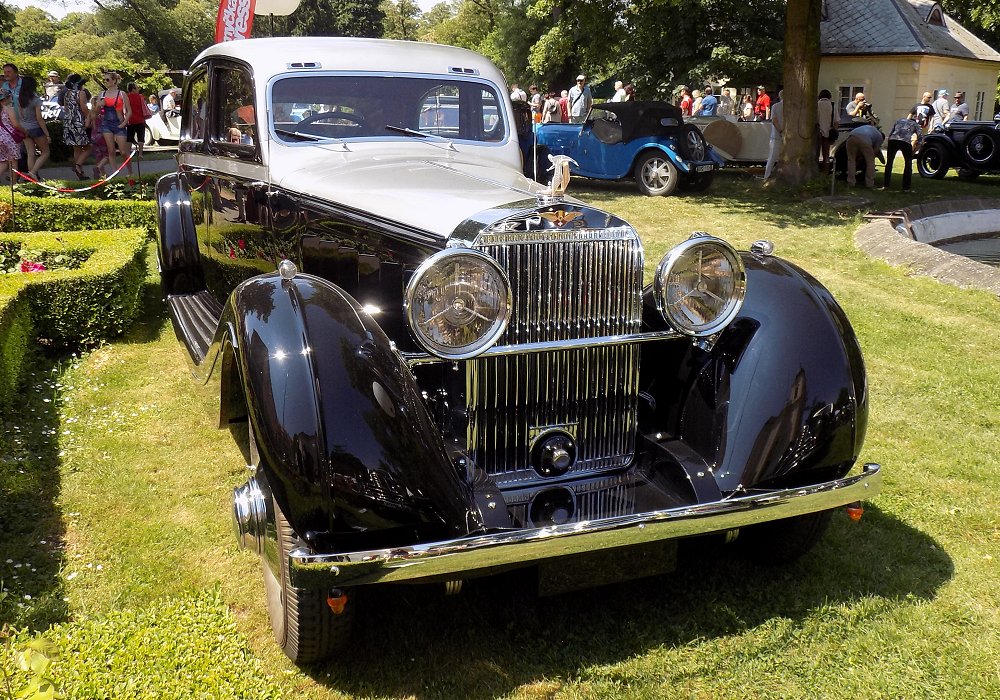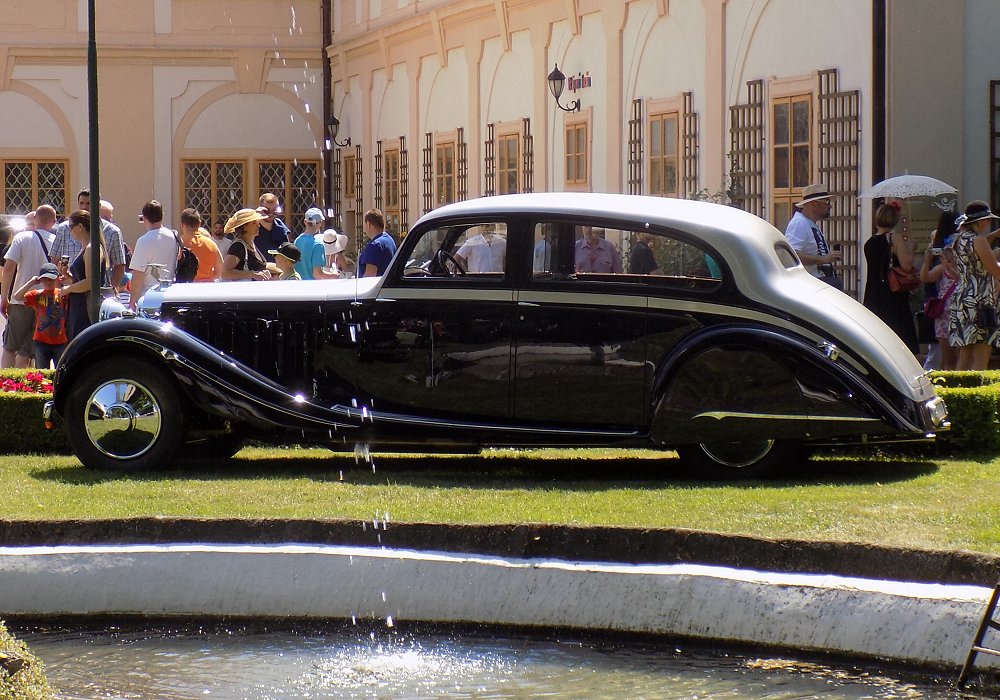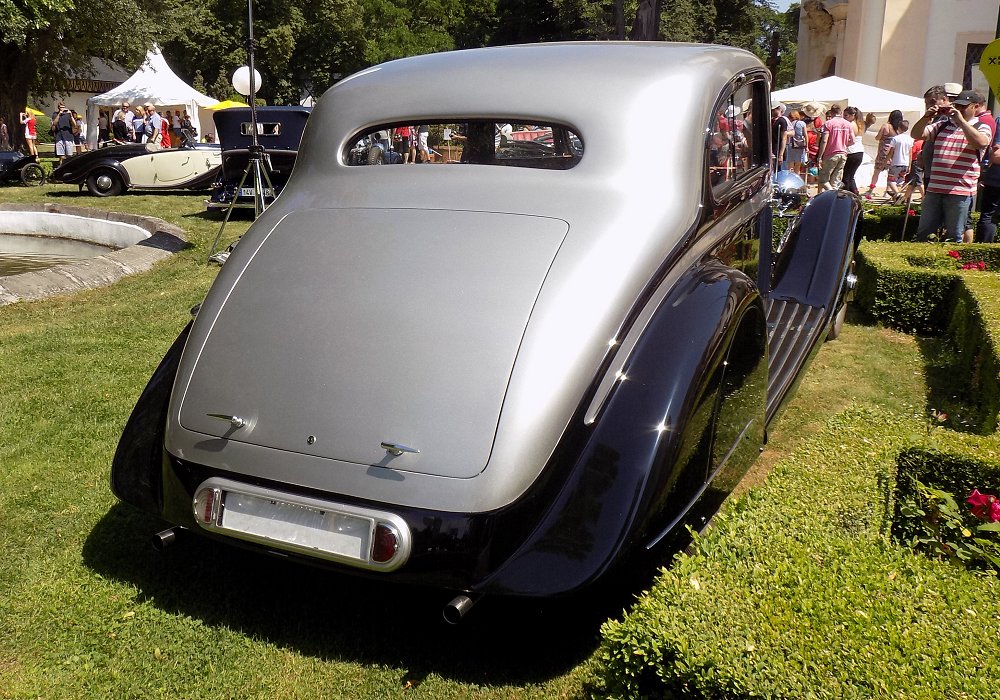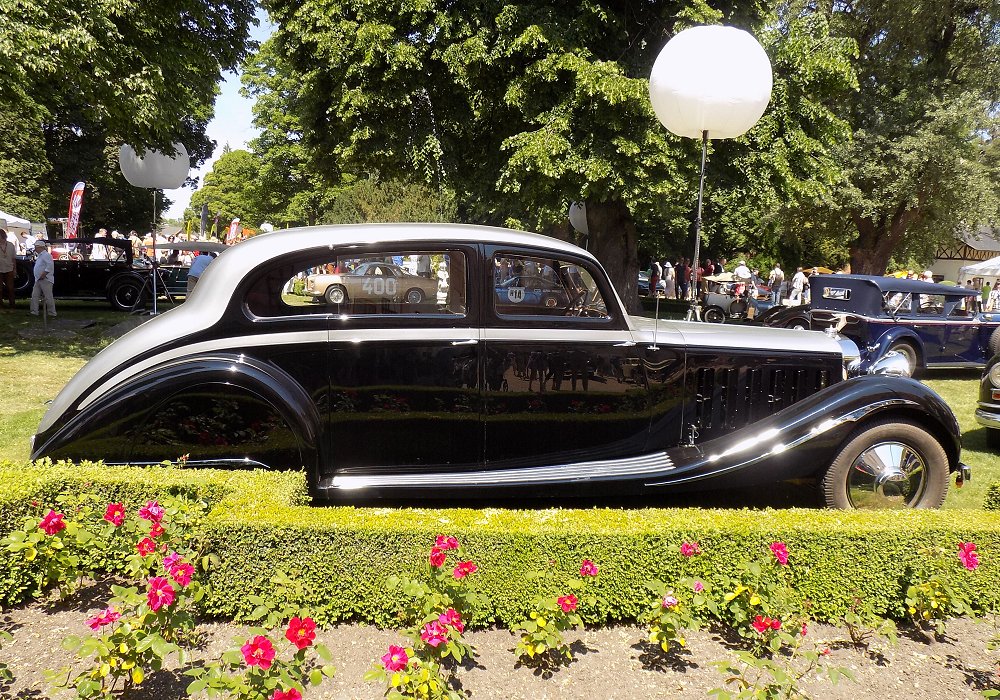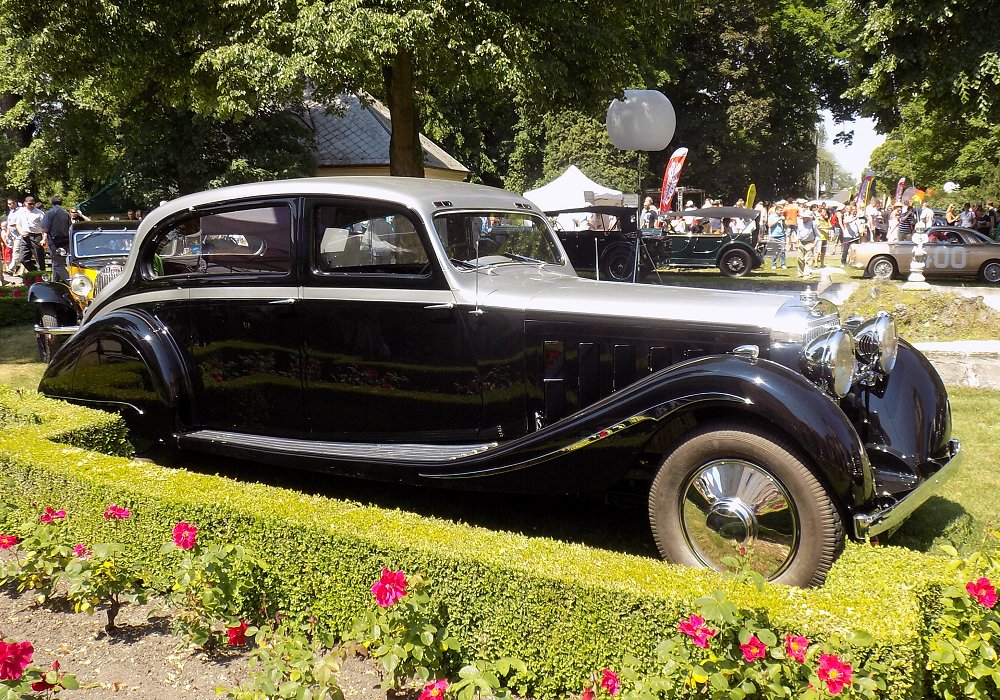Description
The Hispano-Suiza J12 Gurney Nutting Sedan was one of the most distinguished and meticulously crafted luxury automobiles of the 1930s—a grand expression of Hispano-Suiza’s engineering brilliance combined with the artistry of one of Britain’s finest coachbuilders. Built on the legendary J12 chassis, the Gurney Nutting-bodied sedan exemplified an era when the automobile was a symbol of refinement, craftsmanship, and quiet power.
The Hispano-Suiza J12, introduced in 1931, was the ultimate creation of Marc Birkigt, the Swiss-born engineer whose technical genius had already produced both the Hispano-Suiza H6 and some of the most successful aircraft engines of World War I. At its heart was a magnificent 60-degree V12 engine, machined entirely from solid billets of aluminum—an extraordinary feat of precision and expense. The initial displacement of 9.4 litres was later increased to 11.3 litres, producing approximately 220 horsepower with immense torque delivered in near silence. This engine was famed for its balance, refinement, and smoothness, and it became the benchmark for automotive engineering sophistication in the prewar era.
The J12 chassis was equally advanced. It incorporated servo-assisted four-wheel brakes—a Hispano-Suiza innovation—and a heavy-gauge steel frame of exceptional rigidity. The result was a car that combined immense size and presence with surprising composure and agility. The J12 could cruise comfortably at 160 km/h (100 mph), its immense power delivered with the smoothness of an electric motor. It was a car built not for ostentatious display but for dignified performance, admired as much for its technical perfection as for its elegance.
Onto this extraordinary foundation, the British coachbuilder Gurney Nutting applied its signature craftsmanship. Based in Chelsea, London, Gurney Nutting was among the most respected names in bespoke coachbuilding, known for its impeccable proportions and restrained yet luxurious designs. The firm’s work on the J12 chassis produced one of the most beautifully balanced sedans of the decade. The long, sweeping fenders, upright but graceful radiator, and finely contoured roofline gave the car a commanding but dignified presence. The use of gentle curvature in the body panels, combined with precise detailing, reflected Gurney Nutting’s mastery of visual harmony—a hallmark also seen in its work for Rolls-Royce and Bentley.
The interior of the Hispano-Suiza J12 Gurney Nutting Sedan was a masterpiece of British luxury craftsmanship. The rear compartment was designed for the comfort of its distinguished occupants, featuring rich leather upholstery, hand-polished walnut or mahogany veneers, thick carpeting, and finely detailed fittings. The dashboard and driver’s area, though functional, were finished to the same exacting standard. Every component—switches, gauges, handles—was crafted with a jeweller’s precision. Many cars featured a glass partition separating chauffeur and passengers, as well as amenities such as folding tables, cigar trays, or even inlaid clocks and mirrors.
On the road, the J12 Gurney Nutting Sedan delivered an experience unmatched by any other car of its class. The massive V12 engine provided silent, effortless thrust, its torque so abundant that gear changes were rarely necessary. The servo-assisted brakes offered confident, smooth stopping power, and the ride quality was remarkably refined thanks to the chassis’ careful balance and engineering precision. To drive—or be driven in—a J12 was to experience the pinnacle of prewar automotive grace and serenity.
Each Hispano-Suiza J12 was a bespoke creation, tailored to its owner’s specifications, and the Gurney Nutting-bodied examples were among the most exclusive of all. Only a handful of J12 chassis were ever sent to British coachbuilders, and Gurney Nutting’s work stands out for its balance between continental sophistication and British understatement. These sedans were favored by wealthy industrialists and aristocrats who valued elegance and engineering over ostentation.
Today, the Hispano-Suiza J12 Gurney Nutting Sedan is regarded as one of the most beautifully proportioned and technically accomplished cars of the 1930s. It represents the rare meeting of Swiss mechanical precision, Spanish heritage, and British coachbuilding artistry. Surviving examples are prized centerpieces of major collections and concours events, celebrated not only for their rarity but for their sheer excellence in design and execution.
The J12 Gurney Nutting Sedan remains a symbol of an era when automobiles were created as works of art—machines that combined innovation, power, and grace in perfect harmony. It stands among the greatest luxury cars ever built, a testament to Hispano-Suiza’s motto: “The car that defies time.”
